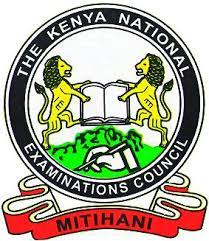
CHAPTER TWO
MARKETING PLAN
A section of the business plan that describes the user benefits, available products and services and the type of market that exists.one plans on how to market products/services and the main features are;
2.1 Potential customers.
- Describe your customers well ranging from ;
- Institutions-Hospitals, Churches, Individuals, Wholesalers, Retailers and Households.
- Determine location of your customers in terms of their demographic characteristics
- Consider customer characteristics and considerations on products i.e. price, quality, appearance, color, shape, material, size, weight, volume and efficiency.
- Business considerations when targeting customers
- Advertisement and promotion
- Variety of goods and services
- Credit facilities
- Capability of employees
- Methods of selling.
2.2 Market share/size.
This is the amount of unit sales e.g. what is your estimated/expected total sales in units per month or even quarterly or yearly.in estimating the market size, one needs to list down the business selling similar products in market e.g. show using a pie chart, bar graph, line graph, give or frequency polygon.
Table 1-Hypothetical/model of a given market tabular explanation.
BEFORE PENETRATION IN THE MARKET
| A | B | C | TOTAL | |
| SALES(Kshs.) | 20,000 | 40,000 | 40,000 | 100,000 |
| MARKET SHARE | 20% | 40% | 40% | 100% |
Table 2- Hypothetical/model of a given market tabular explanation
AFTER PENETRATION
| A | B | C | D | TOTAL | |
| SALES(Kshs) | 20,000 | 40,000 | 40,000 | 20,000 | 120,000 |
| MARKET SHARE | 17% | 33% | 33% | 17% | 100% |
2.3 Competition
- Analyze key competitors in terms of strengths and weaknesses
- Consider what the competitors are doing
- Analyze the factors that may have contributed to success or failure of the competitors.
- Determine if there are gaps to be filled.
- Determine your potential competitors and their sizes in assets, sales volume and market share of major competitors.
- Determine strengths and weaknesses of competitors.
- Craft techniques and plans to capitalize on weaknesses of competitors
Assuming that we have 3 firms A, B and C,
Table 3- Hypothetical/model of a given market tabular explanation
| A | B | C | TOTAL | |
| Assets | 200,000 | 100,000 | 200,000 | 500,000 |
| Sales volume | 400,000 | 500,000 | 300,000 | 1.2M |
| Market share | 0.4M/1.2M=33% | 0.5M/1.2M=42% | 0.3M/1.2M=25% | 100% |
| Profit p.a | 80,000 | 100,000 | 60,000 | 240,000 |
| Employees | 3 | 4 | 2 | 9 |
2.4 Promotion strategy
- This section describes entrepreneurial approach to creating awareness of products and services and motivating customers to buy.
- Elements of advertising commonly used are: personal selling, sales promotion, publicity, public relations, sponsorship and customer relationship management.
- Medium/media used should be well designed i.e. electronic or print media.
- How will you portray your products?
- What image do you project in mind of consumers?
- How often will you advertise your products or services
- How much will each advertisement cost?
- How will you measure the effectiveness of your advertisement?
- Which promotion campaign will you undertake when introducing the product or service e.g. free samples or free introductory services
- Which promotional methods will you employ on regular basis e.g. trade shows, sponsorships and cost of promotion per event
- How will you measure the effectiveness of your promotional campaign
2.5 Pricing strategy.
- Include methods of calculating selling price for your products and services.
- Factors likely to influence price setting include;
- Income of clients targeted
- Prevailing market prices
- Cost of raw materials
- Nature of competition.
- Incorporate actual selling prices of products and services.
- Arrive at credit terms to be offered.
- What kind of credit?
- When are you going to offer credit e.g. end month
- When will customers payback.
- Enlighten the customers on the types of discounts offered e.g. cash, trade(quantity)
- Enlighten members on the available after sales services available.
2.6 sales tactics
- Refers to the methods of selling either directly or indirectly(use of agents)
- If you intend to sell through distributors/agents, how will you select and motivate them? For middlemen, you can use already used by many competitors and select the ones with high reputation. One can motivate middlemen by giving them high profit margins.
- Establish the geographical areas that your agents will cover.
2.7 Distribution strategy.
- Covers the physical movements of products and may incorporate establishment of middlemen/intermediaries to achieve or support movements
- Channel is either direct or indirect.
- Means of transport used is either road, rail, water or air.
- Analyze the specific distribution problems likely to be experienced.
- Craft ways of curbing the problems anticipated.
